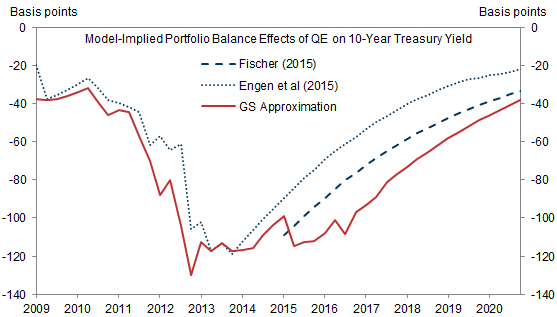Financial media, Fed watchers, and the punditry pay special attention to the Kansas City’s Fed’s annual conference at Jackson Hole. It is a forum that draws top speakers, innovative ideas, and a sense of the possible policy changes. I expect that a key question will be the reduction of the Fed’s $4.5 trillion balance sheet – how much, and how fast?
Because many market participants attribute the increase in asset prices to liquidity generated by the QE programs, markets are sensitive to any change. Even the contemplation of a reduction in QE caused the “taper tantrum” market reaction. Later decisions ending QE programs did not have the same effect. What about now?
I have frequently written that the punditry under-estimated the effect of a stronger economy and growing earnings, and over-estimated the QE effect. Commentary has more to do with a simple, persuasive theme than disciplined economic analysis.
A Costly Misperception
Investors pay too much attention to the Fed, and not enough to expected earnings and inflation.
Two months ago, I explained why the Fed plan to allow holdings to expire without replacing them would have a small impact. The key factor is that this is not a two-party market, but one with depth far greater than the securities offered. The problem with my explanation is that it requires a basic economic understanding of economics. It does not reach those who are proud that they never took Econ 101.
We are already seeing scary articles on the effects of the unwind. (Almost always ends in recession, based on six cases. This is an author on a mission!) This analysis, suggesting an increase in ten-year yield of 12.5 bps per year, is much closer to the truth.

Since I am trying to help investors, I seek the most persuasive presentation of truth. Instead of relying on basic economic theory, let us try a completely different approach.
A Natural Experiment
Suppose that a single owner held 60% of an asset and wanted to liquidate the position in a year. There is a right way, and a wrong way to accomplish this. It is the question faced by the Federal government when it wanted to conclude its ownership position in the stock of General Motors (NYSE:GM). Here are the key events:
ProPublica tracked each investment in the bailout, as well as each repayment. It is a complete timeline.
In 2008, after the bailout, the US owned 60% of GM. The Treasury reported the Bush Administration plan, the Obama Administration support, and the final bailout size.
In 2013 the Treasury sold 70 million shares and announces a plan to sell the remaining 31 million shares. It announced a plan for a gradual sale via outside brokers.
On a quarterly basis, the Treasury plans to disclose how many share of GM stock it has sold and will report monthly its proceeds from the sale.
In December, the Treasury sold 200 million shares of its GM stock to the Detroit automaker for $5.5 billion, or $27.50 a share.
In order to prevent hedge funds and other investors from taking advantage, the Treasury doesn’t make the trading plan public.
The plan places limits on how much stock can be sold at any given time and at what prices. Government officials also can provide the banks with direction on when they should sell additional shares.
Last month, the Treasury named Citigroup Inc (NYSE:C). and JPMorgan Chase & Co (NYSE:JPM). to manage the sale.
The banks will get a 1 cent per share commission — or $3 million — for the sale of the entire stake.
The Treasury has said it “intends to sell its shares into the market in an orderly fashion and fully exit its remaining GM investment within the next 12-15 months, subject to market conditions.”
The government needs to get $72 per share for its remaining shares to break even on its $49.5 billion GM bailout. It initially held a 61 percent stake before selling about half of its shares in GM’s November 2010 IPO at $33 a share.
At current prices, the Treasury would lose more than $12 billion on its GM bailout.
When the plan was finally completed, the big story for most was the net loss on the “investment.” These articles included a lot of controversy, including opinions that the Government should hold on for a better price. Few evaluated the economic effects of stabilizing the company.
But my mission is neither to justify nor to evaluate the policy. I am using it as an example of how to exit a large position. How well did the plan work? Let’s look at GM stock prices during 2013 with Ford as a comparison.

The 2013 period is the key comparison. The prior period is presented to show the typically tight correlation between the stocks. It would be difficult to argue that the stock price suffered from the government sale of 60% of the company.
Policy Implications
The Fed should not feel bound to procedures designed for prior and dissimilar conditions. The public announcement of each QE trade helped to create a mythology that affected markets. They seem not to understand this. The Fed’s objective should be to minimize the footprint of the trades – the implementation of a policy which has consensus support.
Investor Implications
The answer to our headline question is that we should not care about the balance sheet unwind. This policy change will not – ultimately – be important for markets. The size is small relative to the overall market. Most pundits could not even tell you the daily volume in Treasuries, nor could they draw a supply and demand curve. It is a good example of where even a small amount of economic education can provide a big market advantage. And also where pseudo-experts can create fear.
